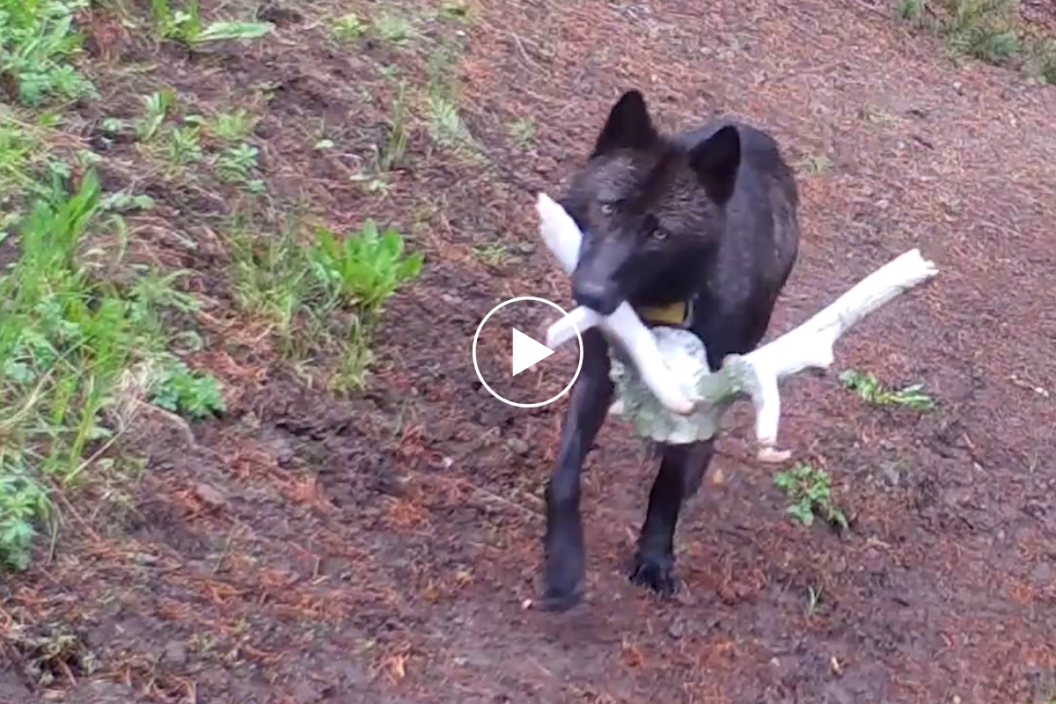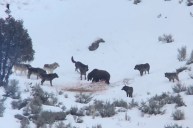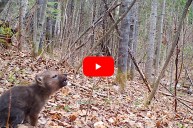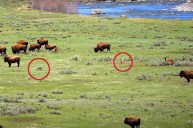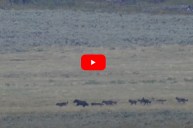Wolves are very social creatures, living in packs and caring for one another. We've seen footage of them hunting together and fending off other predators. But we rarely get to see the playful side of wolves. Thanks to a Yellowstone National Park research team, we get a glimpse at the softer side of these furry predators.
A video from spring trail cam footage was posted to the park's social media page, showing adult wolves bringing "toys" back to the den for their pups to play with. The offerings were antlers, sticks, and bones—the perfect playthings for growing pups.
The park writes in the caption, "Pups await food deliveries from successful hunts, but in the absence of food, adults bring "toys." The instinct to bring items back to the den may be reinforced by evolution and probably helps keep adults from being mobbed by sharp puppy teeth."
According to the NPS, the wolf packs usually have one litter yearly with four or five pups. Those who survive the winter help the pack hunt for larger prey like bison and elk. They also pitch in with the next litter. They bring food for the pups, along with the occasional toy.
On average, the packs are around 11 or so wolves. The wolves follow a social hierarchy of the alpha male and female with a grouping of subordinates. Every member of the pack has a job to do that benefits the overall health of the pack. Since they are very social animals, it really shouldn't be too much of a surprise that they bring toys to the den to keep the young pups amused when there isn't anything to eat.
Wolves are an integral part of Yellowstone's ecosystem, and conservationists consider the wolves' introduction to the area a major win. In the early 1900s, the wolves were almost hunted to extinction. Re-introduction in the 1990s has restored healthy packs to the park's ecosystem. Despite some issues with local ranchers, the project is a success, and monitoring the predators gives the public a chance to see sweet moments like this one.
READ MORE: New Pack of Endangered Gray Wolves Found in Sierra Nevadas
